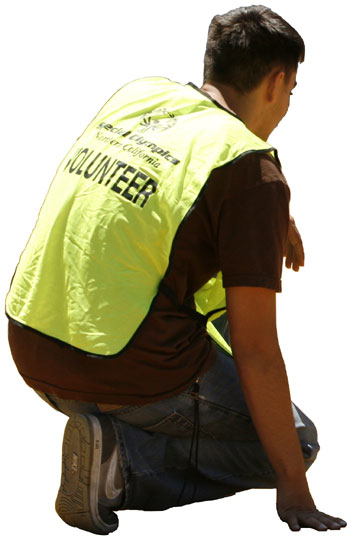Safety Meetings and Safety Training are conducted to keep you safe while you earn your pay. But what if these meetings were presented in a language that you didn’t know? America has always been known as a Melting Pot, with immigrant workers coming from all over the world. Many of them are from disadvantaged countries, and work in seasonal jobs such as agriculture. Others work in construction, mining, and industries with high mortality rates. Some are machine operators, assemblers, cleaners, and helpers. Limited English proficiency may be a direct contributor to workplace injuries or fatalities.
OSHA has a history of requiring employers to train their employees in a manner that they understand. If they don’t speak English, then preparation for their job tasks, as well as safety and health training, is to be conveyed in the language that they understand. If the employee’s vocabulary is limited, training must account for that limitation. Simply telling them to read training materials will not satisfy the employer’s obligation. OSHA also requires employers to verify that employees have acquired the knowledge and skills for which they have been trained; i.e., lockout/tagout, respiratory protection, bloodborne pathogens, etc.
Having worked for an oilfield construction company in West Texas several years ago, I know there were many of our employees that didn’t understand or speak English, and were dependent on their Spanish-speaking supervisors to instruct them. They worked hard for minimum wage, and did a good job. But there were injuries, as well.
The National Institute for Occupational Safety and Health shares these examples of how they are working to improve problems that immigrant workers face:
§ The NIOSH Fatality Assessment and Control Evaluation (FACE) program identifies and studies work-related injury deaths, with the goal of identifying effective prevention measures.
§ Through on-site investigations, NIOSH and cooperating states collect detailed circumstances for select incident types, including deaths of Hispanic workers since 2002.
§ Targeted research programs focused on the construction and agricultural sectors, both of which employ a disproportionate share of immigrant workers.
§ An occupational health disparities program, which is conducting research on the causes and prevention of occupational health disparities including those experienced by immigrant workers.
§ A Spanish language website and translation of several NIOSH publications into Spanish.
§ An innovative information and communication effort with the Spanish-language television network Telemundo and other partners, in which construction safety messages were incorporated dramatically into a widely watched prime-time series, and supplemented with a public service announcement and a special website.
Companies and their supervisors are responsible for the safety of all workers, must understand the hazards of their job, as well as the importance of wearing Personal Protective Equipment, and how to take care of it. If employees see a co-worker that is at risk, regardless of a language barrier, or any other reason, they need to reach out and help. That way, everyone stays safe!
Sources:
OSHA
NIOSH
Safety Meetings and Safety Training are conducted to keep you safe while you earn your pay. But what if these meetings were presented in a language that you didn’t know? America has always been known as a Melting Pot, with immigrant workers coming from all over the world. Many of them are from disadvantaged countries, and work in seasonal jobs such as agriculture. Others work in construction, mining, and industries with high mortality rates. Some are machine operators, assemblers, cleaners, and helpers. Limited English proficiency may be a direct contributor to workplace injuries or fatalities.
OSHA has a history of requiring employers to train their employees in a manner that they understand. If they don’t speak English, then preparation for their job tasks, as well as safety and health training, is to be conveyed in the language that they understand. If the employee’s vocabulary is limited, training must account for that limitation. Simply telling them to read training materials will not satisfy the employer’s obligation. OSHA also requires employers to verify that employees have acquired the knowledge and skills for which they have been trained; i.e., lockout/tagout, respiratory protection, bloodborne pathogens, etc.
Having worked for an oilfield construction company in West Texas several years ago, I know there were many of our employees that didn’t understand or speak English, and were dependent on their Spanish-speaking supervisors to instruct them. They worked hard for minimum wage, and did a good job. But there were injuries, as well.
The National Institute for Occupational Safety and Health shares these examples of how they are working to improve problems that immigrant workers face:
- The NIOSH Fatality Assessment and Control Evaluation (FACE) program identifies and studies work-related injury deaths, with the goal of identifying effective prevention measures.
- Through on-site investigations, NIOSH and cooperating states collect detailed circumstances for select incident types, including deaths of Hispanic workers since 2002.
- Targeted research programs focused on the construction and agricultural sectors, both of which employ a disproportionate share of immigrant workers.
- An occupational health disparities program, which is conducting research on the causes and prevention of occupational health disparities including those experienced by immigrant workers.
- A Spanish language website and translation of several NIOSH publications into Spanish.
- An innovative information and communication effort with the Spanish-language television network Telemundo and other partners, in which construction safety messages were incorporated dramatically into a widely watched prime-time series, and supplemented with a public service announcement and a special website.
Companies and their supervisors are responsible for the safety of all workers, must understand the hazards of their job, as well as the importance of wearing Personal Protective Equipment, and how to take care of it. If employees see a co-worker that is at risk, regardless of a language barrier, or any other reason, they need to reach out and help. That way, everyone stays safe!
Sources:
OSHA
NIOSH
